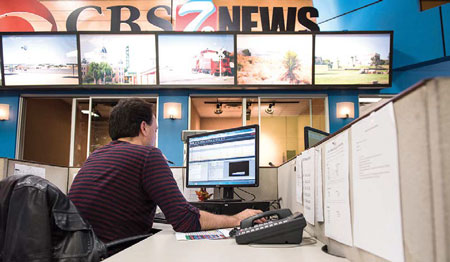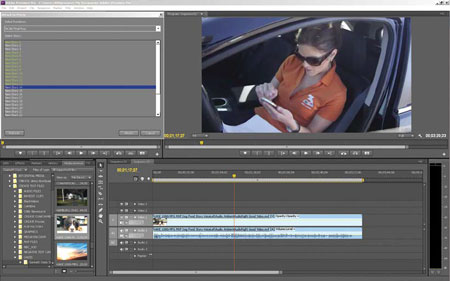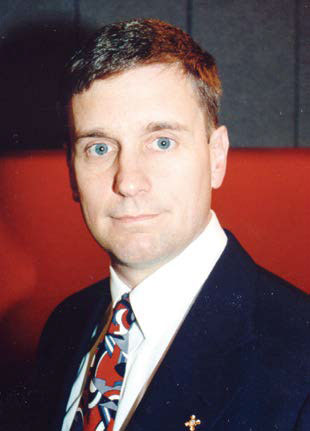Newsrooms Absorb New Tech Advances
SAN FRANCISCO—It’s a theme that has swept through the content creation marketplace and into the broadcast newsroom again and again: change begets more change. After all, a broadcast newsroom no longer solely defines itself by its three newscasts a day; today’s broadcasters must reach a fickle set of eyeballs that jump from TV to mobile device to Web—often simultaneously while multitasking in the same room—and they must continue to do it faster and smarter than the competition.

Newsroom automation technology has taken note of this new reality. And the benchmark of today’s smart newsroom facility is one that meets these new requirements head-on. Today, two key features top the must-have list: a sophisticated means of wrangling multiplatform delivery and mastering social media; and technology that better links the quick-paced news process with traditional production tools.
SECONDARY NOW A PRIORITY
The newcomer and rising star in this story is, of course, distributing to those secondary channels.
At its simplest, the goal is to link together each aspect of the story creation process and deliver it succinctly to multiple platforms. The iNEWS newsroom management system from Avid is one of those news content creation and distribution systems that—in addition to allowing broadcasters to create and deliver breaking news—has made distribution to secondary channels a key priority. Content within iNEWS can be accessed via the Avid MediaCentral | UX system, a cloud-based Web front-end that can be accessed in the field; MediaCentral then gives journalists access to production assets, metadata and iNEWS stories so they can manage rundowns and collaborate simultaneously (see sidebar).
This unification is key, the company said, so that finalized content can be delivered as an integrated package across the broad spectrum of TV, Web, mobile and social media channels. Using the Media | Distribute feature, stations can directly link production with distribution to secondary channels.
Others have placed social media integration front and center in the news production process. The Ross Inception News NRCS has placed a priority on this idea-centric setup, by allowing several members of a broadcast team to collaborate on content as a story evolves, allowing journalists to pull metadata, research materials and contacts into the system.
One of the key features of the system is the ability to create and publish content to a website or social media platform directly from the news environment. Inception allows production teams to collaborate with digital media and Web groups to simultaneously work on content that can then be distributed to these multiple platforms. Data sourced from the Inception platform allow users to drive social media playlists and on-air polling.
The professional video industry's #1 source for news, trends and product and tech information. Sign up below.

Bitcentral’s CORE:news provides a single interface for stations to handle video capture/encoding, editing, playout management, digital publishing and archiving of assets. The system is designed to simplify the process of bringing social media content into a production with the use of tickers, crawls and user-generated content during a broadcast. Using OverDrive QuickTurn, users can record, encode and automatically deliver content for social media and the Web directly from a broadcast.
“We [take] a story-centric approach, so at the same time the reporter is creating content for their linear broadcast, they can also be creating for Facebook, Twitter, etc., at the same time,” said Shawn Snider, director of Inception and Streamline products for Ross. “These social media stories can actually be added right into the production lineup and triggered for publication based on specific items in the show.”
The system also integrates with overarching automation, and production systems like the Ross OverDrive.
AUTOMATE AND MANAGE
But as valuable as it has been as a means of engaging viewers, social media is not what’s driving broadcast news. The other key feature stations must consider is how to automate and thoroughly manage the moving parts of the newsroom production process.
For most broadcasters, that means reevaluating the equipment in their backroom, and making slight changes. For others, a wholesale revamp might be in order.
That often starts with piecing together the control process. Solutions like the ASTRA Studio 3 from Aveco are designed to control all equipment in the production control room and studio, including graphics, camera robotics, video and audio mixer, video servers, lights and backdrop screens. The system touts itself as a multistudio production automation system that can control individual parts of the production process—much like a traditional automation system—but one that has is designed specifically with the newsroom in mind.

In addition to allowing broadcasters to create and deliver breaking news, Avid’s iNEWS newsroom management system has also made distribution to secondary channels a key priority. “Astra was designed with multistudio operations in mind, including local and remote production operations,” said Jim O’Brien, global senior vice president of sales for Aveco. “There is a full management component to the system that allows users in one push to move a rundown from one studio to another if shows run long or if special events require multiple studio coordination.”
Some of the biggest benefits of the system, according to O’Brien, are the ability to make last-minute changes, the ability to manage individual equipment within the newsroom workflow, and the flexibility to work with existing infrastructures and equipment.
For example, the system gives journalists the option to edit stories—even those that have already gone to air—by retooling content, graphics, video clips and texts in a newsroom computer system, and then sending those changes to Studio 3 and on to air.
Through templates and optional parameters within the ASTRA Studio 3, stories are transformed into control events that manage the broadcast equipment. Events are then grouped into shots and presented to the operator on a shotbox control panel, in a timeline view. This feature allows the director to let devices in the studio be controlled by automation, if he chooses.
Tightening that link between the control room and the newsroom is also a priority, one that was addressed by Grass Valley via solutions like the Ignite automated production system and the Stratus video production and content management system.
Sinclair to Standardize News On Avid MediaCentral
BURLINGTON, MASS. —Sinclair is taking cross-station workflow into the cloud by standardizing on Avid MediaCentral, the centerpiece of the Avid Everywhere cloud platform. The deployment will include all 64 of Sinclair’s local news stations and marks Avid’s largest contract in the company’s history.

Del ParksUnder the comprehensive 10-year agreement, Avid will deliver its newsroom production and content management solutions to Sinclair’s stations and replace legacy technology from other vendors in the process. Technology under the MediaCentral Platform includes Avid’s Artist Suite, Storage Suite and Media Suite solutions.
In announcing the deal, Sinclair pointed to one major pressure point for today’s media companies: operating efficiency. By standardizing its newsroom equipment on the Avid platform, Sinclair will keep its newsroom technology consistent, on the leading edge of the industry, and provide greater flexibility in responding to industry changes and new business opportunities, the company said.
“Having defined and more frequent technology upgrade cycles will enable us to keep our newsrooms current across the enterprise and allow us to respond to rapid changes like new digital distribution models in a more cost-effective way,” said Scott Livingston, vice president of News for the Sinclair Broadcast Group.
Avid shares rose more than 17 percent when the deal was announced. John W. Frederick, executive vice president and chief financial and administrative officer for Avid, said the company expects the contract to have “a material positive impact on our bookings for the fourth quarter, and may lead to updated 2015 bookings guidance or pre-release in early January 2016.”
Susan Ashworth
That single point of control philosophy was also behind the recent collaboration between Grass Valley and Dejero, which announced an integration last month between Dejero’s LIVE+ Control monitoring and management tool with Grass Valley’s video production and content management system, Stratus. With the goal of breaking down the barriers between news field operations and the central newsroom, the collaboration will allow stations to use the embedded Dejero tool to access, manage and assign content from Dejero video-over-IP transmitters within a window of the Stratus system. This collaboration came after recognizing the increasing demand for timely on-site reporting and the shift in the way news is gathered today, said Mike Cronk, senior vice president of strategic marketing for Grass Valley. “The pressure to get relevant content to air faster is intense,” he said.
The integrated package gives users a centralized system with a simplified workflow for handling live and recorded content ingest. The result, the company said, is greater efficiency and time savings for breaking news coverage. Via the Dejero integration, users can record and stream content, record timelines, move and edit files, and control channel output recordings from within the Grass Valley video production and content management system. The resulting integration, the companies say, cuts a clearer path for broadcast-quality video to be transmitted from the field to the newsroom.
MULTIPLE PLATFORMS
Producing and distributing stories across multiple platforms is also a key feature of the Precis news production playout system and CORE:news interface from Bitcentral. CORE:news provides a single interface for stations to handle video capture/encoding, editing, playout management, digital publishing and archiving of assets. The system allows multiple users to work on developing stories and pull down finished assets from a Web-based browser.
Likewise, the Precis system can serve as a center hub for working with other newsroom computer systems, NLEs and control room automation systems to move content to and from a MOS-enabled production system or content delivery platform. Both systems are designed to facilitate the publication of SD- or HD-formatted content to Web, mobile and broadcast outlets.
“Precis allows field contributors to edit stories on location and move their stories seamlessly from the field through editing to the newsroom computer system and finally to air,” said Fred Fourcher, CEO of Bitcentral.
For those situations where advanced newsroom data management isn’t required, RUSHWORKS has stepped into the space with its VDESK Integrated PTZ Production System.
In a typical three-camera newsroom configuration, a single operator can manage both camera control and the show rundown. The system’s PRODUCER touchscreen interface includes a 3D representation of the news desk, with picture icons of the anchors; by using a preset, users can select a preset shot of an anchor.
Users can build a playlist with graphics and clips as well as sequentially select live graphics and clips for the rundown. Likewise, anchors can self-prompt using simple software outputting to monitors above or below each PTZ camera.
Susan Ashworth is the former editor of TV Technology. In addition to her work covering the broadcast television industry, she has served as editor of two housing finance magazines and written about topics as varied as education, radio, chess, music and sports. Outside of her life as a writer, she recently served as president of a local nonprofit organization supporting girls in baseball.

